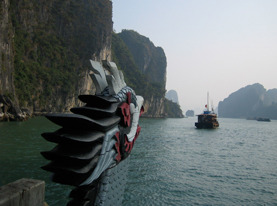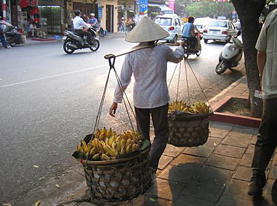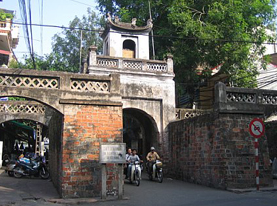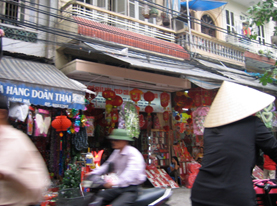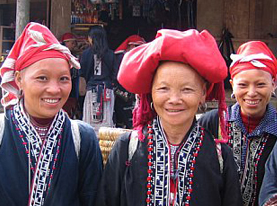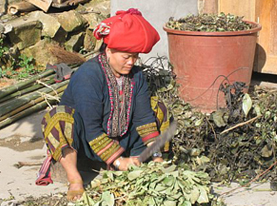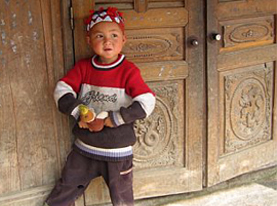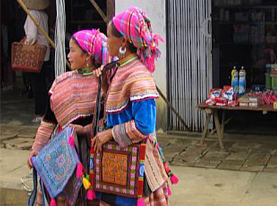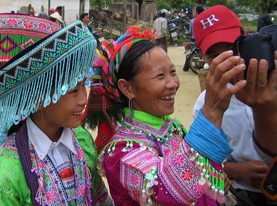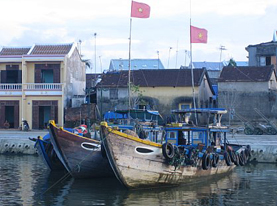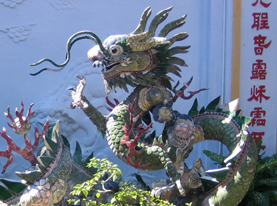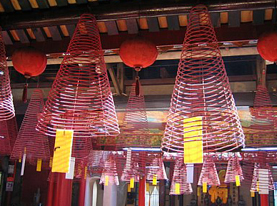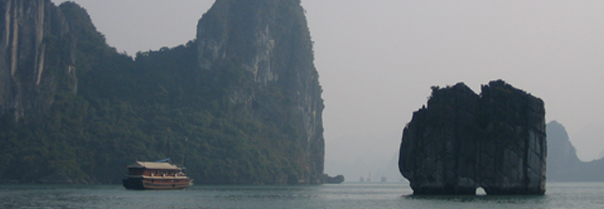
What's
New
- Winners Gallery
- Katrina's Editorials
- Health and Fitness
- Special Offers
- Field Experts
-
Travelogs
-
July 2012
Aspen Summer -
February 2012
Ladies' Trip to India -
September 2011
Grazing Our Way through the “New Tuscany” -
Summer 2011
Biarritz, San Sebastian & more -
June 2011
Vietnam: Traditions and Transformations -
April 2011
Peru Spring Break -
April 2011
Ski & Sea Spring Break -
December 2010
Miami Art Basel -
September 2010
The East Side of Eden -
September 2010
Buenos Aires, Sao Paulo and Rio -
August 2010
Ionian Bliss -
August 2010
Buzz-worthy Berlin -
July 2010
Alaska Adventure -
April 2010
Springtime in New York -
February 2010
Aspen: Winter Wonderland -
January 2010
Australia: Home for the Holidays -
November 2009
New York: Dining, Theater & Art -
October 2009
London Art & Dining -
September 2009
Japan Journey -
June 2009
Peru Adventure
-
July 2012
- Newsletters
- Press
- MLS Signature Trip: Arctic Adventure
Travelogs
Vietnam: Traditions and Transformations
Standing at the rail of our Chinese junk, my friend Laura and I gazed out across Halong Bay. Craggy limestone peaks (the arching tail of an ancient dragon, according to legend) rose up through the mist ahead. Laura grinned – this magical place was the inspiration for our trip to Vietnam. She’d wanted to come here ever since seeing Catherine Deneuve cruising dreamily among the islands in the movie “Indochine.” Besides us, the boat’s figurehead grinned too. It was carved in the shape of a dragon’s head, which seemed very fitting.
I hadn’t thought much about visiting Vietnam until Laura mentioned it. My impressions were based on American movies about the war, and vague notions about what life must be like in a Communist country. I was not prepared for how very capitalist it actually seemed – everything imaginable was for sale, even Communist-party memorabilia. In the Old Quarter of Hanoi, the narrow streets are named for the wares they once sold (and sometimes still do) – Silk Street, Silver Street, Pickled Fish Street. One had shop after shop selling paper lanterns; in another, the storefronts gleamed with metal cookware; another was lined with woven baskets. Daily life spilled out onto the sidewalks, where women crouched, grilling meat over smoking coals, and men sat on tiny stools drinking beer, or tall chairs getting haircuts. Cyclo drivers called to us from the seats of their pedicabs, offering us rides – saleswomen hawked knockoff purses and souvenirs. And in the background, the endless hum of motorbikes, honking and swerving, often loaded with 3 or 4 people at a time and sounding like a huge swarm of bees.
Despite all the bustle, Hanoi is charming and graceful, dotted with ornate temples, elegant French colonial buildings, and tranquil gardens. Some neighborhoods were heavily damaged in the war, but the altars and courtyards of the Temple of Literature, founded more than 1,000 years old, still stand. Early in the morning, on the lawn across from Ho Chi Minh’s mausoleum, residents line up in rows to do their exercises. The mausoleum and Ho Chi Minh museum are surreal experiences – he never sought such glory for himself, and the museum’s exhibits are more symbolic than informative – but touring the famed leader’s austere home, modeled on a traditional stilt house, was enlightening. These monuments, with their rigid yet incomprehensible rules, were one of the few times where the Communist government was apparent to us. (The other was when our guide asked if American elections were compulsory. He said the Vietnamese elections routinely had 99% turnout, but he never bothered to vote, since there was only one party.)
Fascinating though Hanoi was, we had much more to see. Halong Bay was at the top of the list, and turned out to be one of the most enjoyable parts of our trip – kayaking past the mysterious karst formations, pausing here and there for a swim, watching the setting sun turn the islands into crisp silhouettes. The next day we docked alongside several other elaborate junks and went ashore to tour the aptly named “Amazing Cave,” a series of limestone chambers filled with strangely shaped stalagmites, made even more dramatic by colorful lighting.
Our next destination was Sapa, high in the mountains near the China border. This region is home to a number of hill tribes, known for their richly embroidered costumes and traditional crafts. A friend of mine had recommended Sapa to me, based on her own memorable visit here. Unfortunately the area has become very touristy – the Black Hmong in particular were relentless in selling their wares. The scenery of steep, terraced hills was stunning, however, and our guide was excellent. We trekked from one village to another, stopping to tour a school and the house of a local family (dark, smoky, and very basic). I was startled later to see a similar home with a satellite dish attached.
Another day we visited the Red Dao village – several of the women accompanied us on a hike through the countryside, asking us all about ourselves, and grabbing my arm solicitously when I nearly slipped and fell in a muddy pasture. They, of course, had their own goods to sell, but were more restrained about it, and I was happy to buy a few small things in exchange for the pleasure of their company.
On our last day in the mountains, we traveled to Bac Ha, home of the Flower Hmong (so called for the many vibrant colors of the women’s clothing). Their Sunday market was a dazzling site, with skeins of bright yarn for sale next to piles of plastic sandals, and men smoking huge pipes made of hollowed-out bamboo. A Hmong woman had brought her two young daughters to the market in the hopes of finding them husbands – the girls wore fringed, beaded hats that looked like Victorian lampshades. Unlike many of the villagers, who did not enjoy having their pictures taken, the mother laughed gaily when a photographer showed her the image he’d captured of her family.
Our final destination was Hoi An, a beautiful seaside town known for its unique architecture – a blend of Vietnamese, Chinese, Japanese and French Colonial – and exceptional cuisine. We wandered among the historic buildings, dropping in at the ornate Phuc Kien assembly hall, where red coils of incense, looking like hoop skirts, hung from the ceiling, smoke rising in a wisp from one end. In the afternoon, we borrowed bicycles from our resort and rode out to the beach. White sand, warm turquoise waters – a vacation within an adventure.
Vietnam has undergone a major transformation in the last few decades, putting the devastations of war behind them and finding ways to compete in the modern world. When I was there a few years ago, the motorbikes in Hanoi were a relatively new phenomenon – just a short time before, everyone had gotten around by bicycle. Recently I rehashed my adventure with MLS's Indochina partner, Patrick, who told me things are continuing to change rapidly, and not always for the better. Hanoi still charms, Hoi An has managed the influx of tourism without losing its soul, and while Sapa is something of a tourist trap, there are authentic hill tribe experiences to be had in the mountains closer to Laos. But Patrick’s advice is to enjoy Vietnam now, before it loses the qualities that make it so enchanting.
For me, the magic of Vietnam was in the out-of-the-way places – sitting with locals on a narrow, tippy bench as we ate noodles in a tiny restaurant in Hanoi’s Old Quarter, having a stand-off on a mountain path with a gentle but stubborn water buffalo, talking politics with our well-spoken guide in Sapa. Patrick says many of his American clients are veterans of the Vietnam War, who return not to banish ghosts but to experience again the beautiful landscapes and friendly people. I can understand that desire – I’d go back in a heartbeat.

Until next time,
Ellen Hall
About Ellen Hall:
Ellen Hall is a writer by profession and an avid world traveler by inclination. Her first trip abroad was just after college, when she spent six weeks backpacking through Europe with her best friend. Since then, she travels whenever she gets the opportunity. Her trips usually focus on nature and history, and have included several return visits to Europe as well as Vietnam, Cambodia, Honduras, Peru, Japan, Costa Rica and Guyana. Some of her most memorable travel experiences include hiking the Inca trail, scuba diving with sharks in Honduras, volunteering at a vulture rescue center in Croatia and paragliding in Slovenia.
Copyright 2013 MyLittleSwans, LLC. All rights reserved. My Little Swans, the logo and Share a world of experience are registered Trademarks of MyLittleSwans, LLC. Use of this site constitutes acceptance of our Terms of Use and Privacy Policy.

